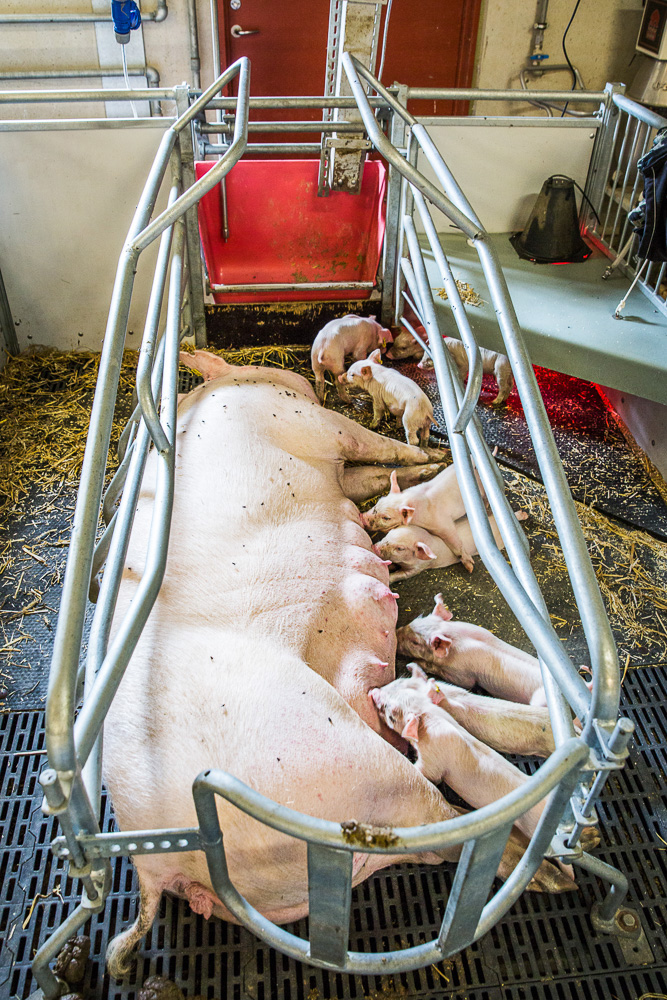Litter size affects the sow’s production of colostrum
Large litter size is one of the factors leading to a higher production of colostrum in the sow, according to studies carried out in the Department of Animal Science. The scientists also found that a good beginning paves the way for a continued productive lactation.


In sows litter size is an important factor for colostrum production, according to results from a study carried out by scientists from Aarhus University and University of Copenhagen.
For newborn piglets the sow’s production of colostrum and milk are a question of life or death. Neonatal pigs are strongly dependent on the energy-rich colostrum from the sow because the piglets are born with limited energy reserves in the form of glycogen. Sufficient intake of colostrum and milk is essential for the survival of the piglet from birth to weaning. It is therefore important to have a handle on what affects the sow’s production of colostrum and milk.
The ability to produce colostrum and milk varies greatly among sows and can be affected by a range of factors, such as nutrition, genetics, management, environment, health, farrowing characteristics and litter characteristics. More precisely how the various factors interact with sow productivity has been investigated in a project carried out at Aarhus University in collaboration with University of Copenhagen.
A total of 121 sows and 2,044 piglets were used in the study which was carried out at Aarhus University’s research centre AU Foulum. Sow productivity was defined as colostrum yield, time of lactation start, milk yield during the shift from colostrum to milk production, and average milk yield per week during the whole lactation period. The factors that were investigated included sow nutrition, litter characteristics, farrowing characteristics and composition of colostrum and milk.
More pigs means more colostrum
Litter size turned out to be a crucial factor for sow productivity during the colostrum phase and during the rest of lactation. Farmers should therefore have a focus on litter size when feeding lactating sows.
The project also showed that sow productivity during the colostrum period and at the beginning of lactation had a positive effect on milk yield in the rest of lactation.
- The start of lactation possibly affects the lactation curve. Our results indicate that an early start of lactation has a positive effect on milk yield through the whole period, says Senior Scientist Peter Kappel Theil from the Department of Animal Science at Aarhus University.
The milk protein content in the sow milk decreased in the high-yielding sows. This could indicate that the high-yielding sows were undernourished with regard to protein or essential amino acids. It is therefore important to be aware of feed consumption in the high-yielding sows and perhaps give them an extra supplement of protein.
- It looks like it is worthwhile to focus more on sow production during the colostrum period and the beginning of lactation because there is a positive correlation to milk yield in the rest of the lactation period. Conditions around the time of farrowing can be the key to improving sow productivity to the benefit of piglet survival and growth, says Peter Kappel Theil.
Parts of the project were supported by the Ministry of the Environment and Food’s Green Development and Demonstration Programme.
For more information please contact: Senior scientist Peter Kappel Theil, Department of Animal Science, e-mail: peter.theil@anis.au.dk, telephone: +45 8715 7803
